
Hypena is a genus of moths in the family Erebidae. It was first described by Franz von Paula Schrank in 1802. These non-migratory moths overwinter as pupae and almost never estivate as adults.
Antona is a genus of moths in the subfamily Arctiinae. The genus was erected by Francis Walker in 1854.
Anycles is a genus of moths in the subfamily Arctiinae. The genus was erected by Francis Walker in 1854.

Cosmosoma is a genus of tiger moths in the subfamily Arctiinae. The genus was erected by Jacob Hübner in 1823.

Ctenucha is a genus of moths in the family Erebidae.

Cyanopepla is a genus of moths in the subfamily Arctiinae. The genus was erected by James Brackenridge Clemens in 1861.

Eressa is a genus of moths in the family Erebidae. The genus was erected by Francis Walker in 1854.
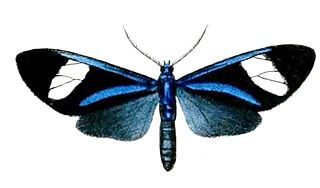
Euagra is a genus of moths in the subfamily Arctiinae. The genus was erected by Francis Walker in 1854.

Eucereon is a genus of tiger moths in the family Erebidae. The genus was erected by Jacob Hübner in 1819.
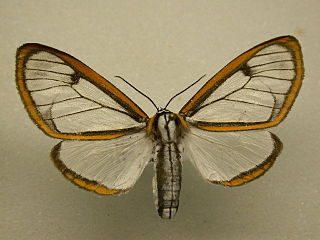
Hyalurga is a genus of tiger moths in the family Erebidae. The genus was erected by Jacob Hübner in 1819.

Lerina is a monotypic moth genus in the family Erebidae. Its only species, Lerina incarnata, the crimson-bodied lichen moth, is found in Mexico and southern Arizona. Both the genus and species were first described by Francis Walker in 1854.
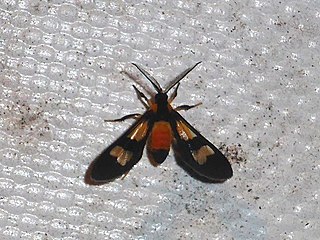
Leucotmemis is a genus of moths in the subfamily Arctiinae. The genus was erected by Arthur Gardiner Butler in 1876.
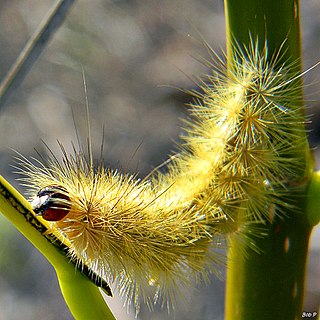
Lymire is a genus of tiger moths in the family Erebidae. The genus was erected by Francis Walker in 1854.
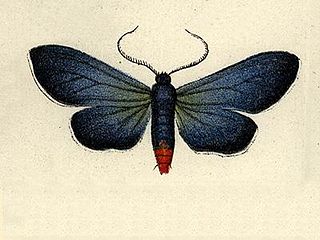
Uranophora is a genus of moths in the family Erebidae. The genus was erected by Jacob Hübner in 1831.

Pseudosphex is a genus of tiger moths in the family Erebidae. The genus was erected by Jacob Hübner in 1818. These moths are mimics of a variety of Hymenoptera. The prefix pseudo means "false", and Sphex is a genus of wasps.

Saurita is a genus of moths in the subfamily Arctiinae. The genus was erected by Gottlieb August Wilhelm Herrich-Schäffer in 1855.

Virbia is a genus of tiger moths in the family Erebidae. The genus was erected by Francis Walker in 1854.

Drymoea is a genus of moths in the family Geometridae erected by Francis Walker in 1854. This genus was originally proposed in the family Arctiidae, but was later transferred to the Geometridae. Some other genera were then included in this genus. The genus is confined to the Neotropical realm.

Dinia is a genus of moths in the family Erebidae. The genus was erected by Francis Walker in 1854.
Castulo plagiata, the yellow-banded footman, is a moth of the subfamily Arctiinae. The species was first described by Francis Walker in 1854. It is found in the Australian states of New South Wales, Victoria and Tasmania.
















